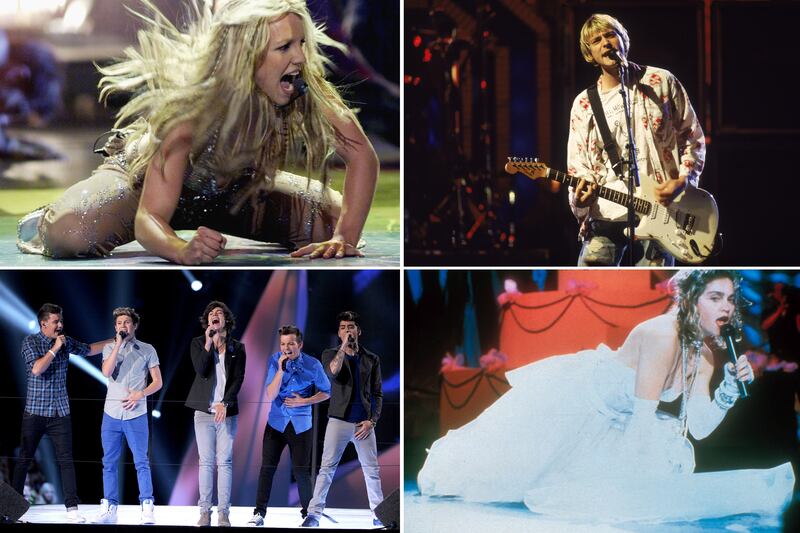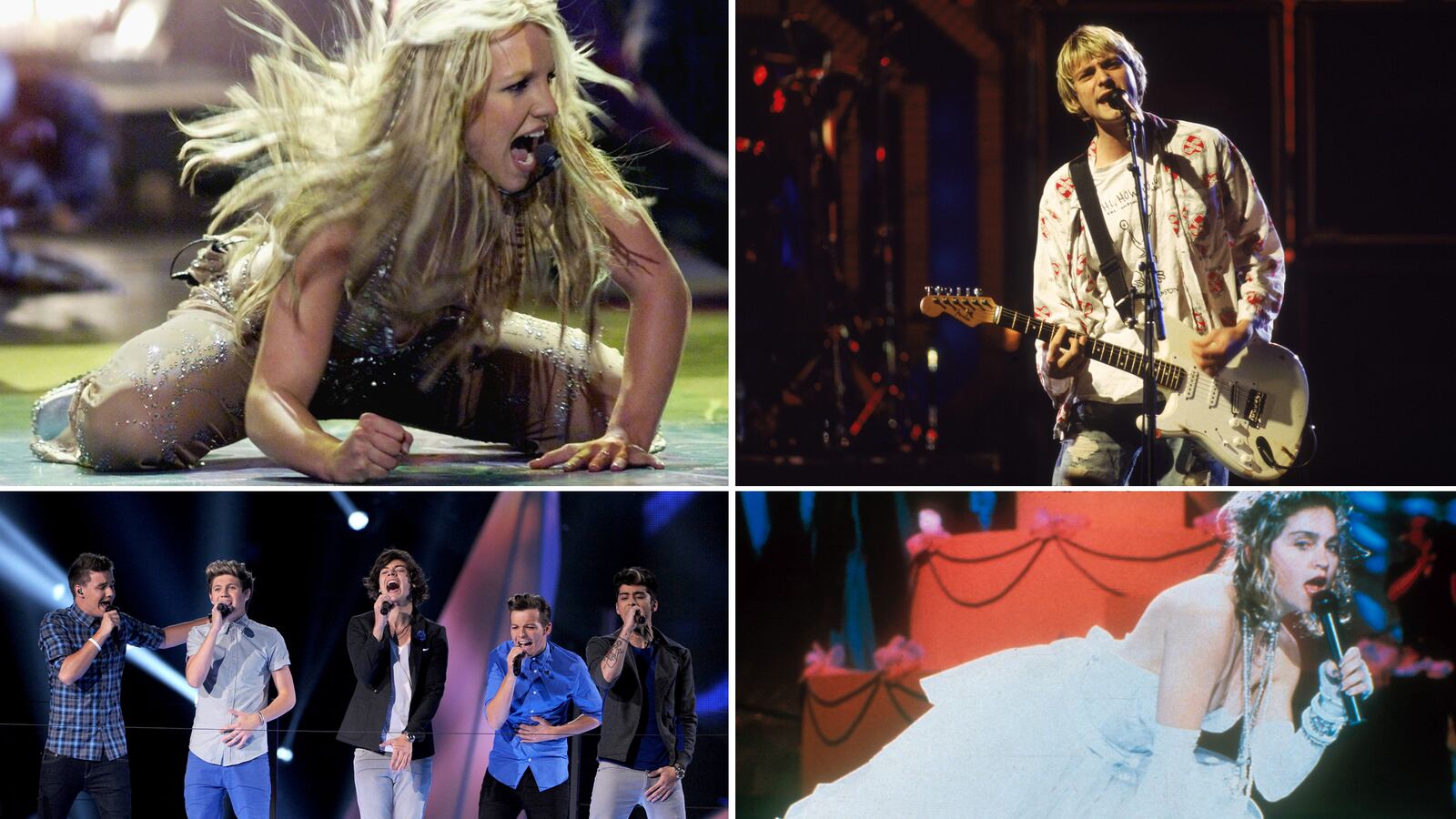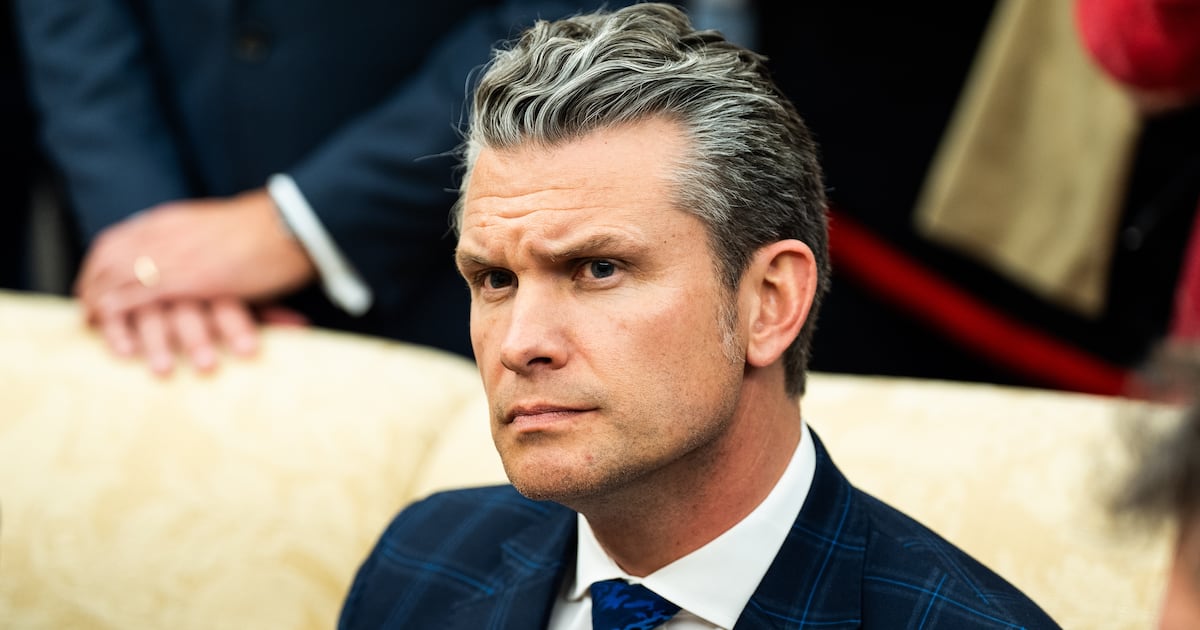We all remember the moments: Madonna rolling around in a wedding dress. Nirvana singing “Rape Me.” Britney Spears writhing in a thong. Kanye West interrupting Taylor Swift. For the past 29 years, the MTV Video Music Awards, the latest installment of which airs Sunday, have successfully operated under an obvious mission: capture the pop-culture zeitgeist and create a Moment—capital “M.” That’s how the music-video awards show managed to stay relevant so long after the network all but stopped airing music videos.

Now, however, the VMAs are facing a bit of a midlife crisis. The show has a history and a future but there's an increasing tension between them. Older fans are enticed by its history as the “dangerous” awards show, the one responsible for those Moments, while a younger demographic, one that may not even realize that MTV ever even played music, is eager to see its own new class of pop stars on stage.
The VMAs of old were wild. They were crazy. They were unfiltered, sometimes foul, often a little bit slapstick, and always—even as bubblegum pop, rap, dubstep, what have you, gained popularity—rock ‘n’ roll.
Britney Spears and Christina Aguilera may have put out music that seemed sweet, but they were making out with Madonna at the VMAs. Lady Gaga may not be as edgy and unpredictable as ’90s-era Courtney Love, but she showed up at the VMAs in a dress made out of meat. Do a Google search for the Video Music Awards, and most of the results are lists recounting those wild, crazy, and insane highlights from telecasts past.
The generation that may remember watching David Bowie and Cyndi Lauper win Moonmen at the inaugural 1984 ceremony and cringing as Nirvana bassist Krist Novoselic was beaned in the head by his own bass guitar in 1992 continued to watch the ceremony well into the mid-2000s, as long as Eminem kept starting fights with DJs and dog puppets, and Rage Against the Machine band members were scaling scaffolding in the middle of the ceremony.
Throughout that entire period, too, music videos, even if they weren’t getting as much airplay as they did when MTV launched, were still memorable: “Waterfalls” by TLC, “Hey Ya” by Outkast, “Single Ladies” by Beyoncé.
Now take a look at some of the big nominees and performers tapped for Sunday’s telecast: Bruno Mars, Miley Cyrus, Taylor Swift, Selena Gomez, One Direction, Katy Perry. Do any of these acts scream “danger,” or “wild,” or “crazy?” Then there’s the issue of the music videos they’re nominated for. While music videos are still well-produced and easily sharable through YouTube and Twitter, do people know what happens in Justin Timberlake’s video for “Mirrors” (four nominations) or Mars’s “Locked Out of Heaven” (three nominations)? Certainly not as many who did 10 or 15 years ago, when a video by Britney Spears, Will Smith, or the Red Hot Chili Peppers would be everywhere.
That’s where the tension lies. The VMAs are old enough to have two, maybe even three generations of fans, each wanting different things from the show. One demographic’s gleeful shock when Axl Rose returned to the stage with Guns N’ Roses in 2002 was rivaled by another’s blank stares: what is Guns N’ Roses? When One Direction took home three awards last year, including one for the whipper-snapper-friendly category Most Share-Worthy Video, the reverse scene can be imagined: a giddy tween set but clueless Gen X- and Y-ers.
Each age group has its own reasons for watching. For one, there’s nostalgia for the days when tuning into MTV was like turning on the radio, for when the network served as value-added musical entertainment. Not only could you watch the channel at any time of day and hear the most popular songs in the country, you could see the acts perform them in crazy, edgy, entertaining music videos.
For a group slightly younger, there are memories of Carson Daly and Total Request Live, a show founded on the idea that music videos still mattered. Once this group was the “young one” that MTV had to evolve its awards show to appease. The network bridged the gap between those two demographics brilliantly, but as the kids of the ’90s become the adults of the ’10s and a new audience emerges, the show appears to be struggling.
Last year’s telecast—which not only crowned One Direction as pop royalty but counted tween-friendly acts Justin Bieber, Demi Lovato, and Carly Rae Jepsen among its big nominees—was the lowest-rated in five years. That was a year after the most-watched broadcast in MTV history. If the thinking was that catering to the younger set would help to win more viewers, the network was grossly mistaken.
Sure, some older audience members won’t be happy unless the VMAs mirrors a Rock and Roll Hall of Fame concert that includes music from their heyday, and the babiest of the ceremony’s viewers would happily see the telecast replaced by a screening of the upcoming One Direction concert movie.
But catering expressly to either group would be, as the Academy Awards producers have learned, a huge mistake. Target the young viewers—here’s Anne Hathaway and James Franco!—and hear the wrath of traditionalists. But make a reactionary move back to tradition—all right, how about Billy Crystal?—and get just as much flak about the show being dated.
What’s always set the Video Music Awards apart is how the show ignored tradition entirely. The VMAs’ calling card was always unpredictability and spontaneity, the idea that anything could happen and that’s why you had to tune in. That was the case when the headlining act was Van Halen. It was the case when it was Nirvana, Eminem, and Britney Spears. And it can be the case again with the likes of One Direction and Justin Bieber—they just have to make that happen.
Audiences have always embraced that aspect. If it’s smart, MTV will return to doing the same.





